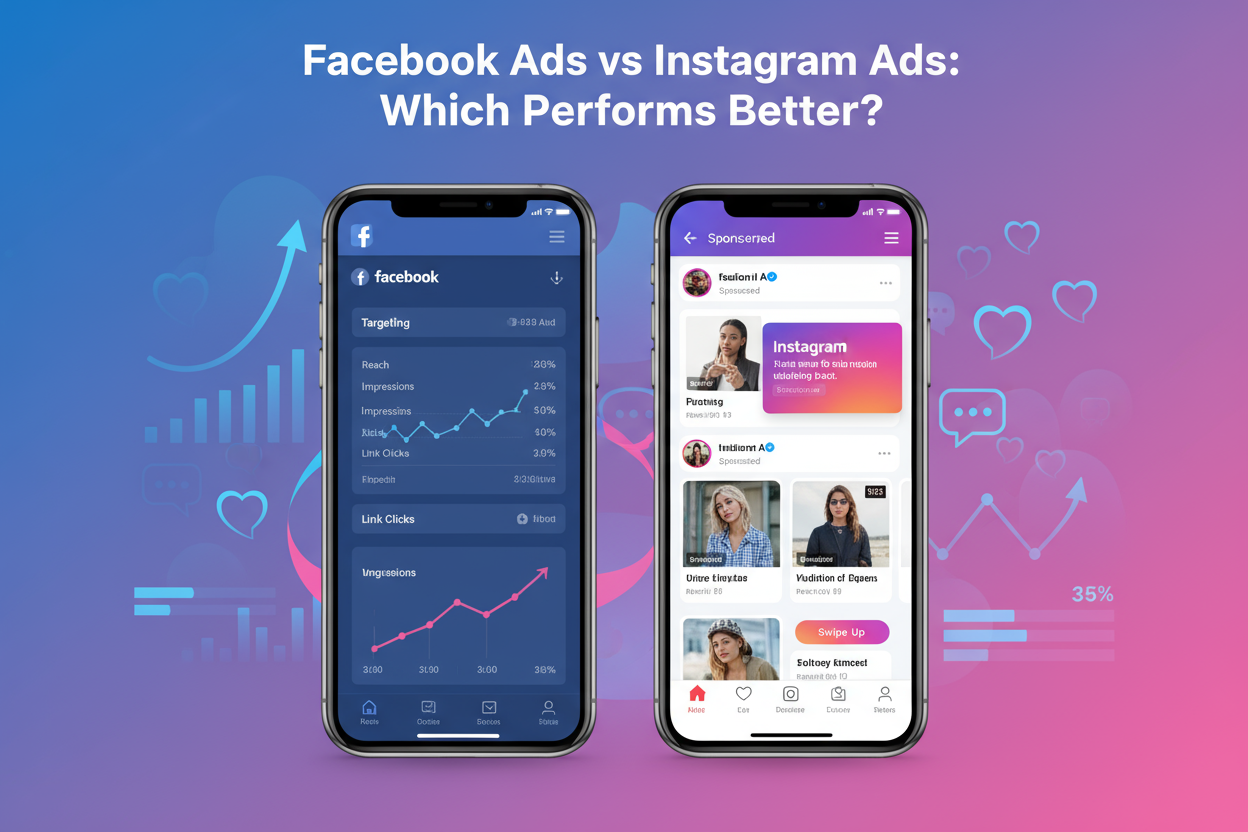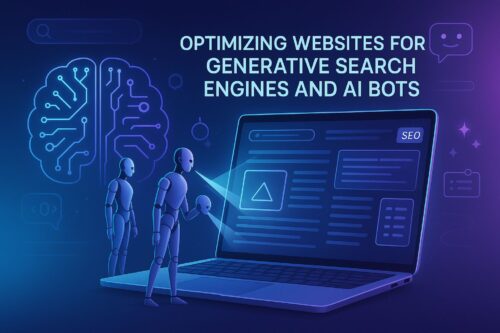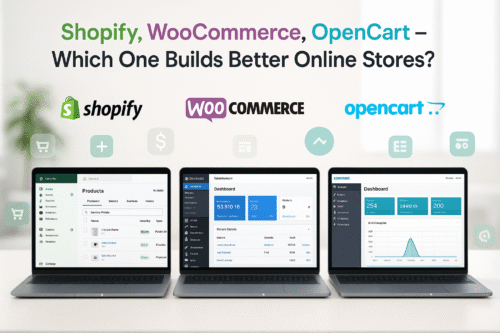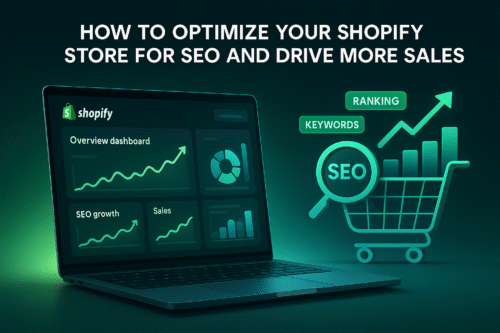In today’s fast-evolving digital marketing landscape, social media advertising has become the cornerstone of brand visibility and performance marketing. Among the giants of online advertising, Facebook Ads and Instagram Ads stand out as the most powerful platforms under the Meta umbrella. Yet, businesses often struggle to decide which platform delivers better results — higher engagement, better ROI, and stronger brand recognition.
In this comprehensive comparison, we’ll explore the key differences, performance metrics, audience behavior, ad formats, and cost structures of Facebook and Instagram Ads — helping you determine which one is best suited for your 2025 marketing strategy.
1. Understanding Facebook Ads and Instagram Ads
Both Facebook and Instagram operate under Meta Ads Manager, allowing advertisers to run campaigns across platforms seamlessly. However, the user demographics, intent, and engagement patterns differ significantly.
- Facebook Ads are best for reach, lead generation, and conversions, especially among a slightly older demographic.
- Instagram Ads, on the other hand, thrive on visual storytelling, ideal for brand awareness and engagement among a younger audience.
While both platforms share the same ad infrastructure, your success depends on aligning the ad creative and campaign goal with the right audience on the right platform.
2. Audience Demographics: Who Uses Which Platform?
When it comes to targeting the right audience, demographics play a crucial role in ad performance.
Facebook Audience Overview
- Age Group: Dominated by users aged 25-44, with strong engagement from those above 45 as well.
- Gender Split: Fairly balanced between men and women.
- Purpose: Users primarily log in to stay connected with friends, read news, join groups, and follow pages.
Instagram Audience Overview
- Age Group: Popular among 18-34-year-olds, particularly Gen Z and Millennials.
- Gender Split: Slightly skewed toward female users.
- Purpose: Users engage for visual inspiration — fashion, travel, fitness, lifestyle, and e-commerce.
Verdict: If your brand targets younger, lifestyle-oriented audiences, Instagram is your go-to platform. For a broader and more conversion-focused audience, Facebook delivers superior results.
3. Ad Formats: Visual Impact vs Informational Depth
Facebook Ad Formats
Facebook offers an extensive variety of ad formats, including:
- Image and Video Ads
- Carousel Ads
- Instant Experience (Canvas) Ads
- Lead Form Ads
- Collection Ads
Facebook’s strength lies in flexible storytelling — combining visuals, copy, and links that lead directly to conversion-oriented actions.
Instagram Ad Formats
Instagram emphasizes aesthetic appeal and immersive visuals, offering:
- Stories Ads
- Reels Ads
- Carousel Ads
- Shopping Ads
- Explore Ads
Since Instagram users prefer visual and emotional content, high-quality visuals and seamless storytelling are crucial.
Verdict: For product discovery and lifestyle marketing, Instagram reigns supreme. For click-throughs and detailed offers, Facebook is more effective.
4. Engagement Rate: Visual Power vs Informational Depth
According to recent Meta performance reports, Instagram Ads boast a higher engagement rate — nearly 2-3x more than Facebook Ads. This is due to:
- More visual content consumption
- Short-form video trends (Reels)
- Strong influencer-driven marketing ecosystem
However, Facebook Ads outperform in click-through rate (CTR) and lead generation, as users are more inclined to engage with content that provides information and value propositions.
Verdict: Instagram wins for engagement and brand building, while Facebook wins for direct response and conversions.
5. Cost Comparison: Facebook vs Instagram Ads CPC and CPM
When analyzing the cost-per-click (CPC) and cost-per-thousand impressions (CPM), both platforms vary based on audience saturation and industry.
Metric | Facebook Ads | Instagram Ads |
Average CPC | $0.80 – $1.10 | $1.20 – $1.65 |
Average CPM | $8 – $12 | $10 – $15 |
Average CTR | 0.9% – 1.3% | 0.6% – 1.1% |
While Instagram Ads tend to cost more, the engagement rate justifies the premium for brands relying on visual appeal.
Verdict: Facebook provides better cost efficiency for performance marketers, while Instagram delivers higher engagement value for visually appealing campaigns.
6. Conversion Rate: Driving Results and ROI
Facebook’s strength lies in its conversion optimization algorithm and the ability to integrate lead forms, website conversions, and event tracking effectively.
- Facebook Ads Conversion Rate: 9–12% (depending on industry)
- Instagram Ads Conversion Rate: 7–10%
This gap exists because users on Facebook are often in an information-seeking or decision-making mindset, whereas Instagram users are scrolling for inspiration.
Verdict: For direct sales and lead generation, Facebook is the stronger performer. For brand storytelling and awareness, Instagram holds the edge.
7. Advertising Goals: Which Platform Fits Your Objective?
Marketing Goal | Best Platform | Why |
Brand Awareness | Visual storytelling and influencer reach | |
Traffic and Clicks | Better link integration and CTR | |
Lead Generation | Built-in lead forms and CRM sync | |
E-commerce & Shopping | Shoppable posts and reels | |
Community Building | Groups and community interactions | |
Video Views | High engagement with short-form content |
Verdict: Both platforms excel when matched with the right campaign goal. A combined strategy often yields the best results.
8. Ad Targeting and Algorithm Efficiency
Both platforms leverage Meta’s advanced targeting system, including:
- Custom Audiences
- Lookalike Audiences
- Behavioral and Interest-Based Targeting
However, Facebook’s data pool is richer due to its longer history and more diverse user base. Instagram’s algorithm, on the other hand, prioritizes content engagement and discovery, ideal for creative and lifestyle brands.
Verdict: Facebook wins in data depth and audience precision, while Instagram dominates in creative discovery and viral reach.
9. Which Platform Performs Better Overall in 2025?
The answer depends on your industry, audience, and objectives:
- Choose Facebook Ads if your goal is lead generation, conversions, or retargeting.
- Choose Instagram Ads if your goal is brand visibility, visual storytelling, or lifestyle promotion.
- For the best results, run integrated Meta campaigns, allowing both platforms to complement each other — Facebook driving conversions, and Instagram fueling engagement and brand recall.
10. Final Thoughts: Facebook vs Instagram — No One-Size-Fits-All
In 2025, the most successful marketers aren’t choosing between Facebook or Instagram — they’re combining both strategically.
By analyzing audience behavior, testing creative variations, and optimizing cross-platform performance, you can achieve maximum ROI from your Meta ad spend. The real power lies not in choosing one over the other, but in leveraging both to their unique strengths.







